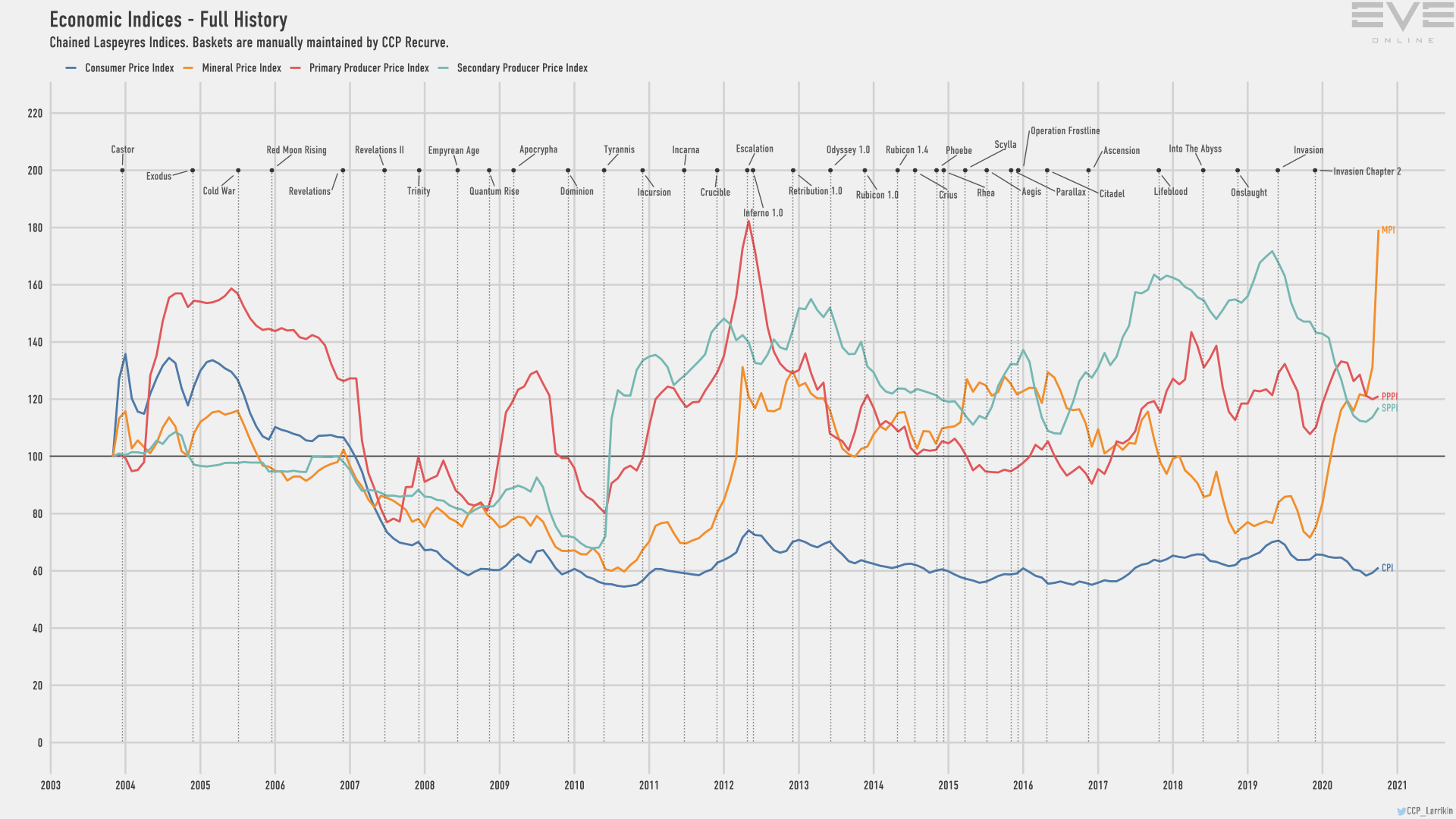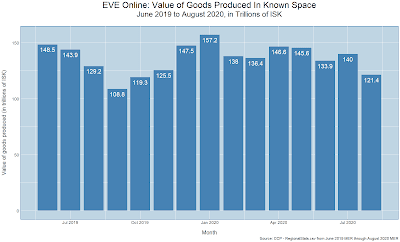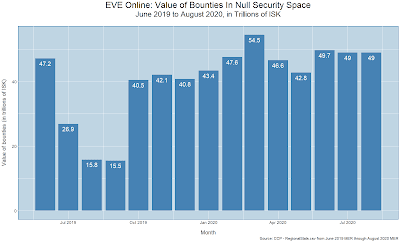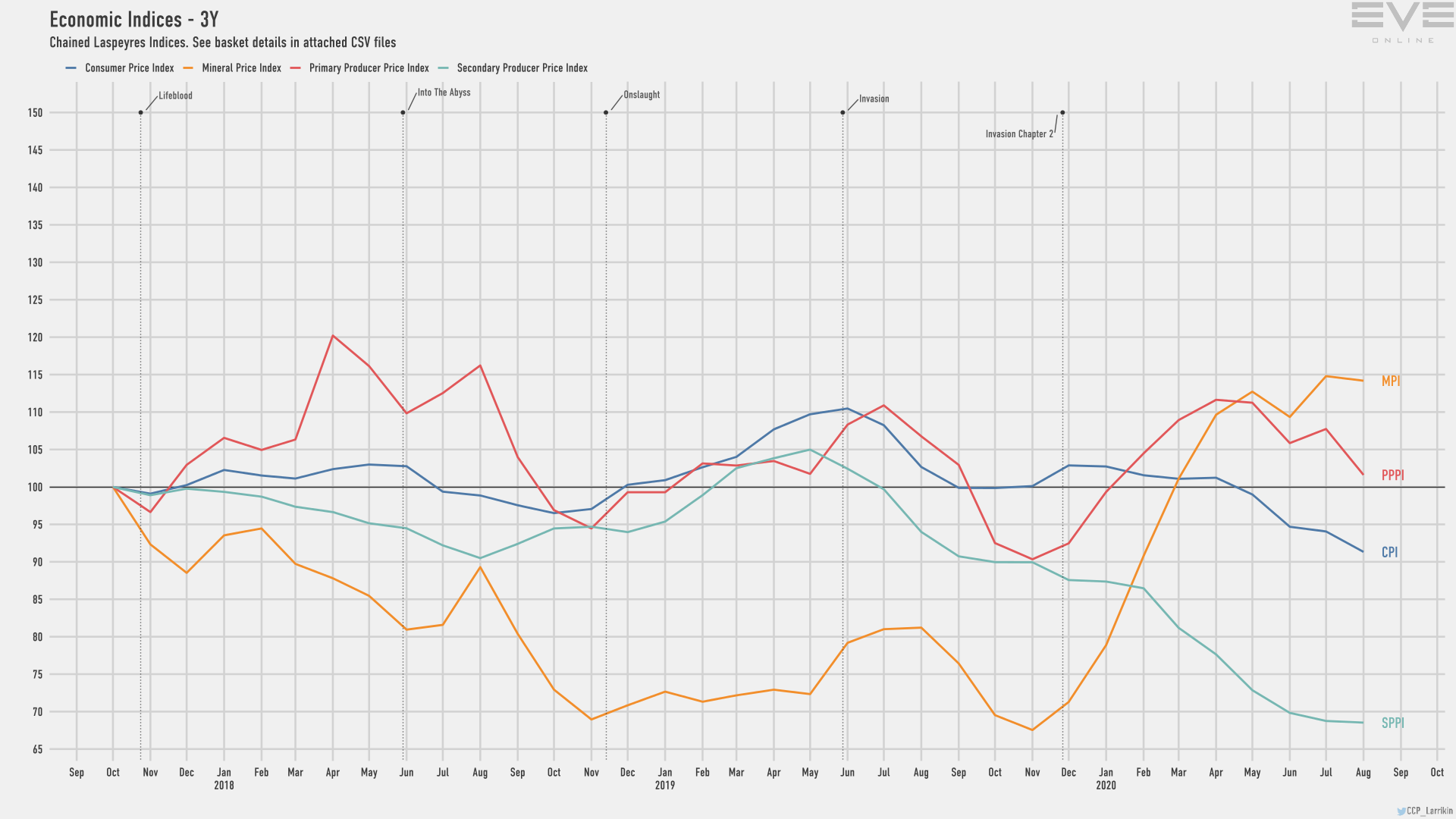On Christmas Eve's Eve, Cloud Imperium Games released a financial statement covering the year 2019. Now, some might find wonder if the maker of Star Citizen and Squadron 42 has something to hide. For purposes of this post, who cares? We have information and perhaps most importantly, graphs. So let's dig in.
First, the report is not a formal financial report. The numbers are dumbed down for the average person to read. Hopefully that includes the folks in the r/StarCitizen sub-Reddit, but only time will tell. In the words of CIG's Chief Financial Officer Simon Elms:
It is that time of year again to set out our Accounting for the 2019 Financial Year, adopting the same format as prior years and following the same simple cost accounting rules. This means without the requisite formats and disclosures required in our financial statements and without revenue recognition adjustments or intellectual property amortization entries.
The aim of the Accounting continues to be simplicity and understandability for the average reader, showing “income,” net of sales taxes, as invoiced or accrued, and costs as incurred, adding capital expenditure as “spent.”
But using the numbers our auditors have reviewed and verified as part of their audit work relating to this financial year.
Perhaps now is a good time to explain what a capital expenditure (CapEx) is. According to Investopedia:
Capital expenditures (CapEx) are funds used by a company to acquire, upgrade, and maintain physical assets such as property, plants, buildings, technology, or equipment. CapEx is often used to undertake new projects or investments by a company. Making capital expenditures on fixed assets can include repairing a roof, purchasing a piece of equipment, or building a new factory. This type of financial outlay is also made by companies to maintain or increase the scope of their operations.
What CIG is doing sounds like the company is trying to make accounting practices designed to satisfy tax laws more understandable. Going back to the Investopedia article, the difference between capital and operational expenditures is:
Capital expenditure should not be confused with operating expenses (OpEx). Operating expenses are shorter-term expenses required to meet the ongoing operational costs of running a business. Unlike capital expenditures, operating expenses can be fully deducted on the company's taxes in the same year in which the expenses occur.
In terms of accounting, an expense is considered to be CapEx when the asset is a newly purchased capital asset or an investment that has a life of more than one year, or which improves the useful life of an existing capital asset. If, however, the expense is one that maintains the asset at its current condition, such as a repair, the cost is typically deducted fully in the year the expense is incurred.
With an explanation of CapEx out of the way, the next subject is Cloud Imperium's overview of 2019. I'll quote the section in full:
The 2019 accounting shows Cloud Imperium continued on its growth path with another record-breaking year for new customers and community engagement. The additional security afforded by the minority investment received in 2018 allowed the group to plan and invest more for the future with a much needed upgrade of its UK offices and the acquisition of a minority stake in Turbulent Inc, Star Citizen’s Online and Publishing platform partner, to further strengthen and secure that relationship. 2019 saw an increase in the “nuts and bolts” infrastructure of the business to accommodate the planned growth, and a step up in the Community and Marketing operations, particularly in the UK, with a very successful CitizenCon being held there this year.
Towards the end of the year, the 2018 investors exercised their pre-agreed option to extend their investment, adding a further $17.25M to the Group’s reserves to pave the way for further expansion and funds to market and promote the ground-breaking projects we are undertaking.
Financial documents often tend to put the best spin possible on a company. Before examining negatives, though, looking at the positives is in order. After all, CIG did have a record-breaking year for income generation.
 |
| Source: Cloud Imperium Games, captured 26 Dec 20 |
Overall, Cloud Imperium Games raised $60.7 million in 2019, a 24.1% increase over 2018. The amount brought in by pledges increased by 26%, from $37.8 million to $47.4 million. CIG defines the "Pledges/Counter" amount as:
This line is taken directly from our daily published Funding Stats Counter, showing the net receipts from our backers and customers. However due to exchange differences and small items that are not included in the counter, such as collected shipping costs on physical goods, the counter does not completely represent all revenue received. Other than subscriptions (referred below) these differences are included in the final income line, to give an accurate representation of total revenue received.
CIG raised an additional $13 million in subscriptions, partnerships with hardware and software vendors, sponsorship income, currency exchange differences, and other items.
The unspoken part of CIG's financial report is the rate at which the company burns through its funding.
 |
| Source: Cloud Imperium Games, captured 26 Dec 20 |
CIG described the above chart as follows:
This represents capital expenditure in areas such as hardware and software, fixtures, fittings, office refurbishment and build out. It is heavily influenced by staff numbers and hardware renewals as well as server upgrades and other infrastructure costs required for the efficient deployment of the game.
Whilst this is capital in nature, it is included in this accounting as it represents an outlay for the materials required to develop and publish the game. Since the total capital expenditure amount is included here, we do not list the depreciation portion of such expenditure subsequently in the cost.
Combining the information from the income and spending charts leads to some conclusions that CIG and/or Star Citizen fans may not like.
CIG's spending continues to outstrip funding. In 2019, CIG increased spending by 25.4%, up to $70.4 million. In 2018, CIG's spending exceeded revenue by $7.2 million. In 2019, the difference expanded to $9.7 million. So the record income could not keep up with the record outgoes.
The fans no longer totally fund the project. Through the end of 2019, CIG had raised $260.8 million in pledges (game & ship sales) and an additional $18.1 million in subscriptions. The $278.9 million from fans fell $38.3 million short of the $319.9 million CIG spent on developing and marketing Star Citizen and Squadron 42 through the end of last year.
CIG is reliant on outside investors to complete the project. Pledges and subscriptions were not CIG's only source of income. When adding in all other sources excluding outside investors, CIG raised $317.2 million during its first 7 years of existence. As mentioned previously, CIG has spent $319.9 million through the end of 2019. What is keeping CIG in the black at this point is the combined investment of $63.25 million into CIG by Clive and Keith Calder. Presumably, CIG used $2.7 million of the Calder's funds to keep the Star Citizen/Squadron 42 project running in 2019.
CIG will need to raise at least $150 million to $200 million more from the end of 2020 to complete Star Citizen and Squadron 42. I tend to underestimate CIG's spending on the Star Citizen project. At the end of the first quarter of 2020, I estimated that CIG had spent almost $320 million, a figure that CIG reached at the end of 2019. If the 2019 gross burn rate of almost $6 million/month remains constant, CIG will spend between $210-$220 million in the years 2020-2022, assuming the game launches at the end of 2022. But with the November announcement that CIG & Turbulent are launching a new studio to support Star Citizen, the burn rate is likely to increase.
 |
| Source: RobertsSpaceIndistries.Com captured on 26 Dec 20 |
Besides the need to raise staggering amounts of money to complete the games under development, does the financial information published by CIG tell the reader anything useful going forward? Nothing solid, I'm afraid. With the pledge amount in 2020 at approximately $70 million, any type of cost containment puts CIG in much better financial shape. But the question going forward is whether CIG can hold expenses down while continuing to raise large amounts of money from players. But we won't know the answer to that question until CIG publishes 2020 financial data at the end of 2021.










































